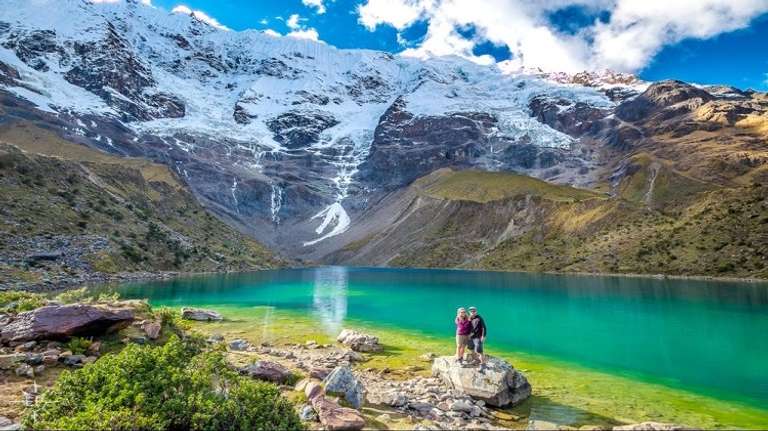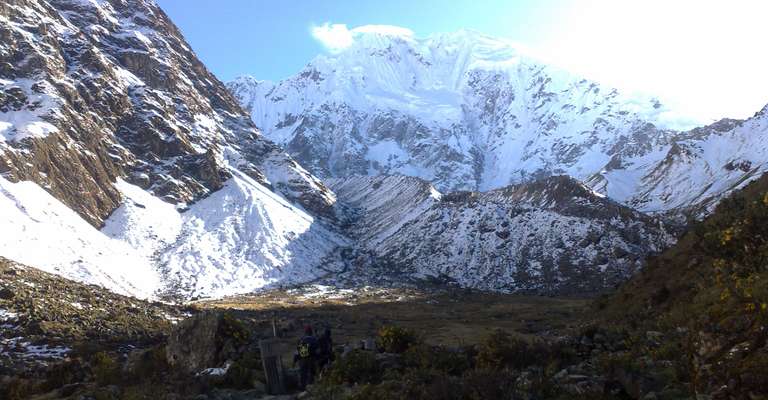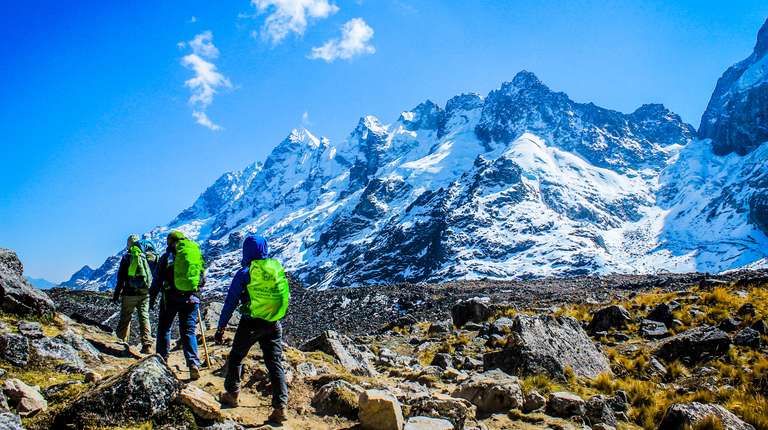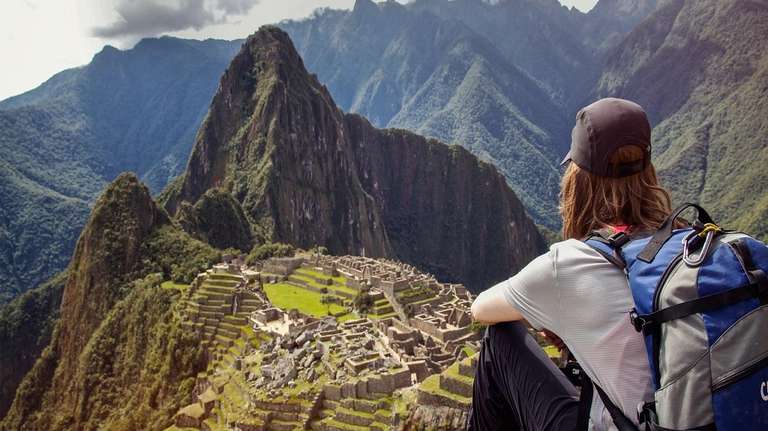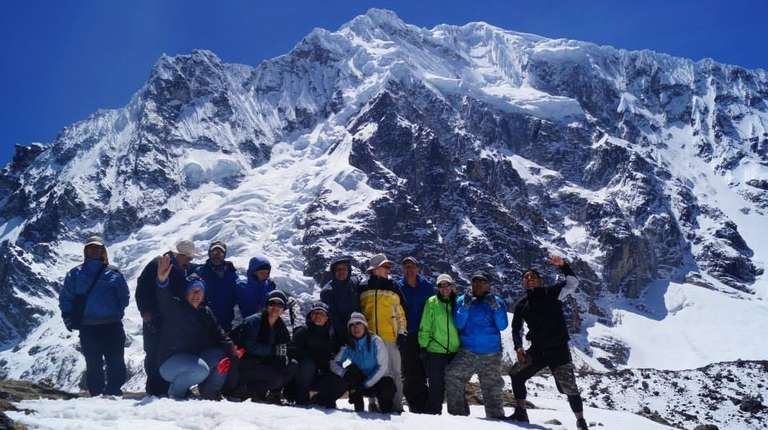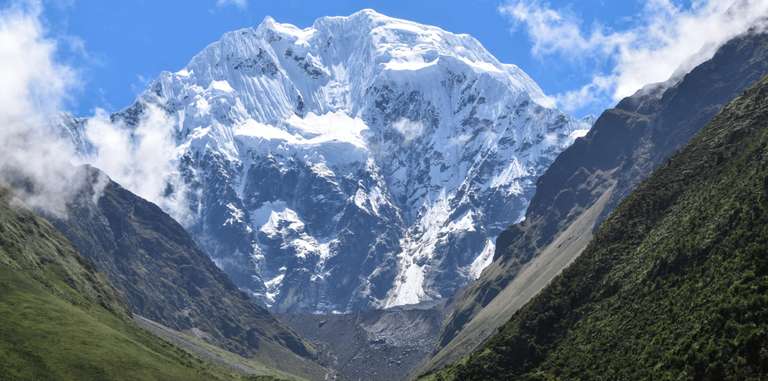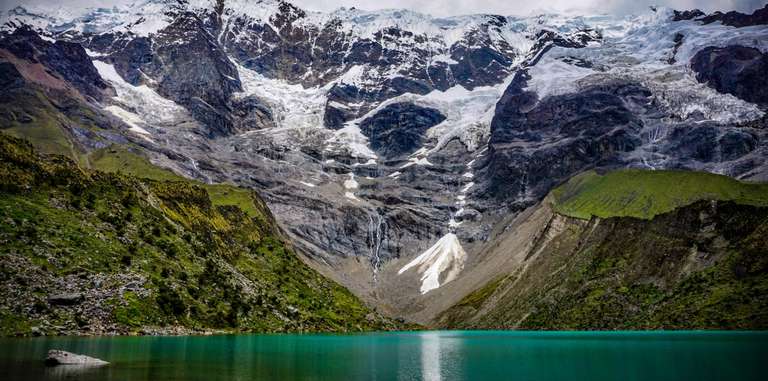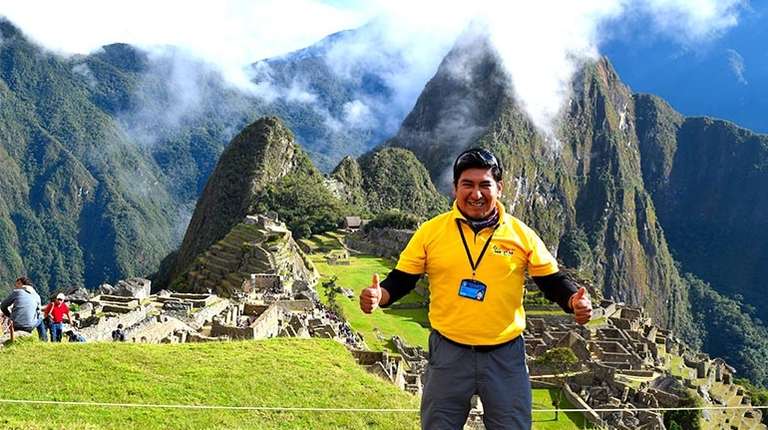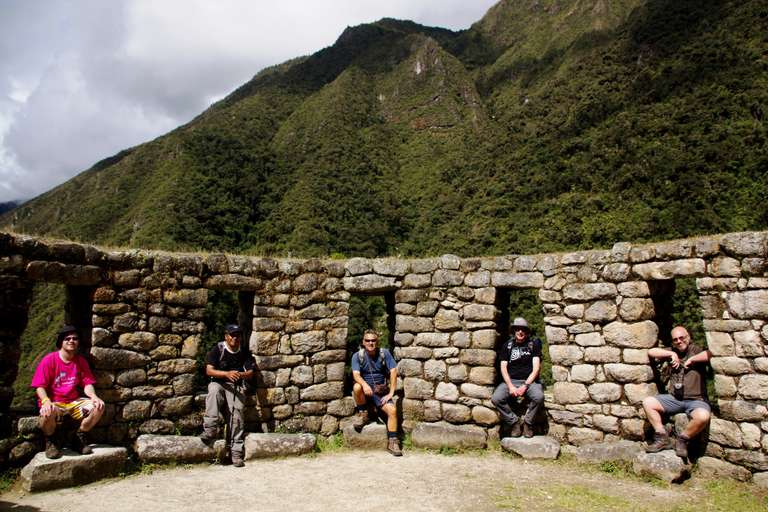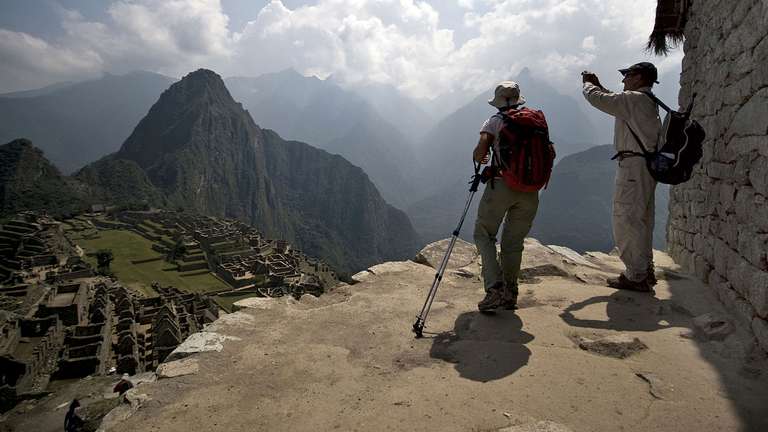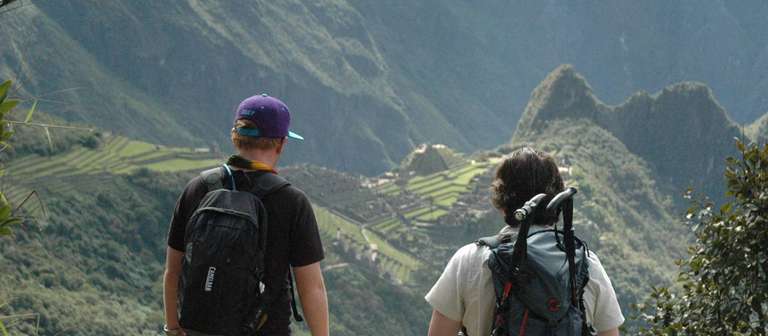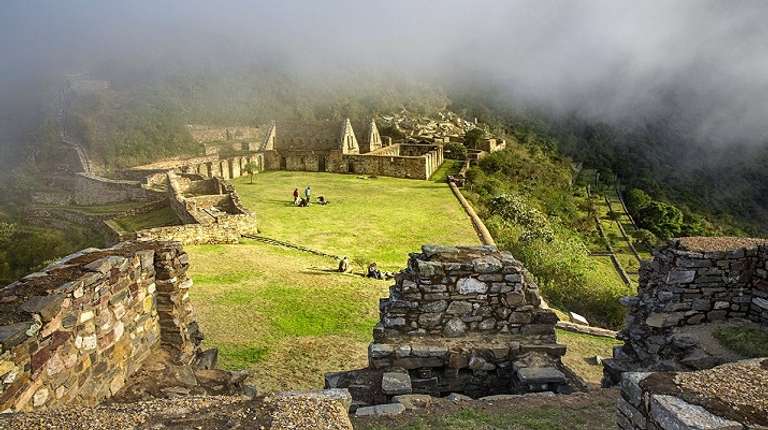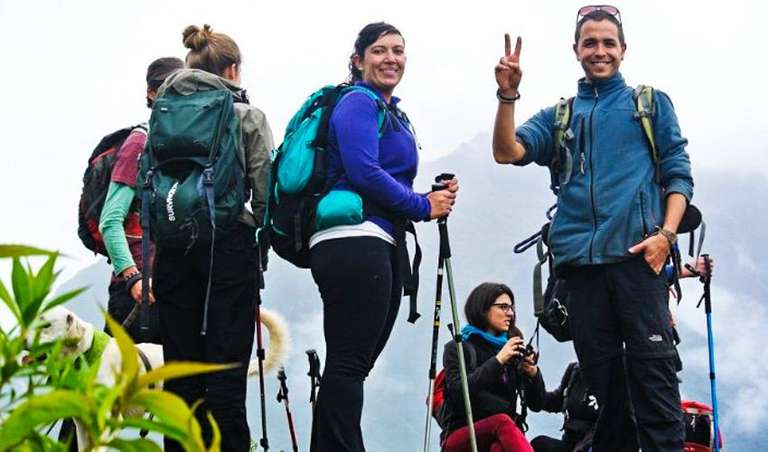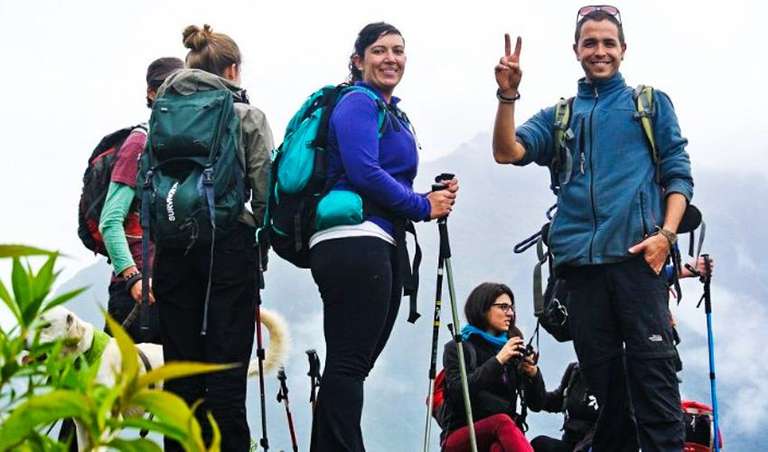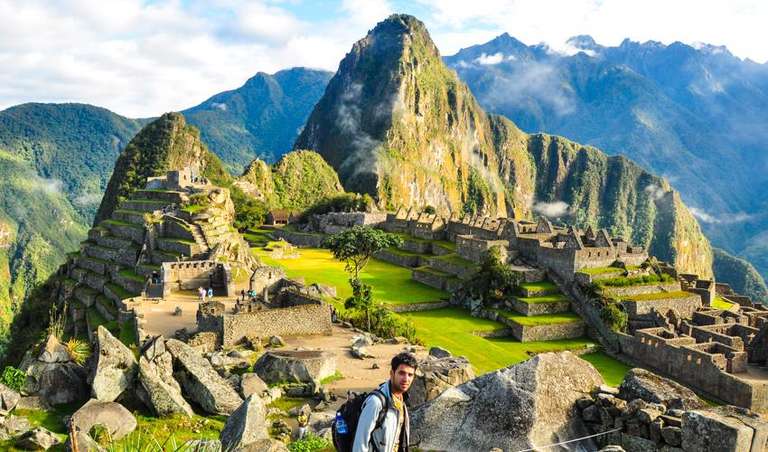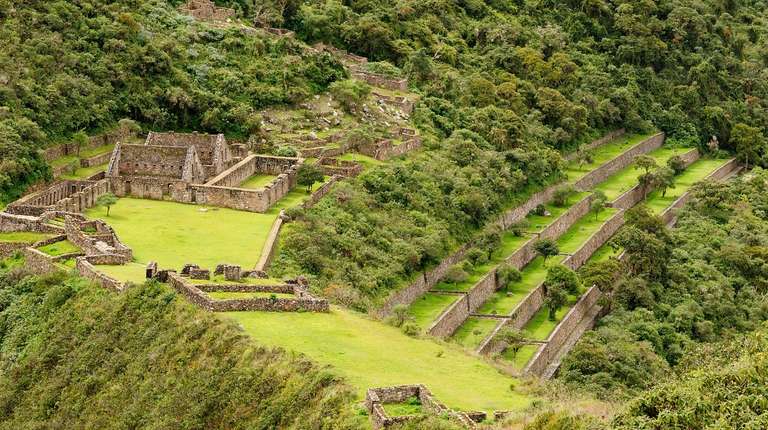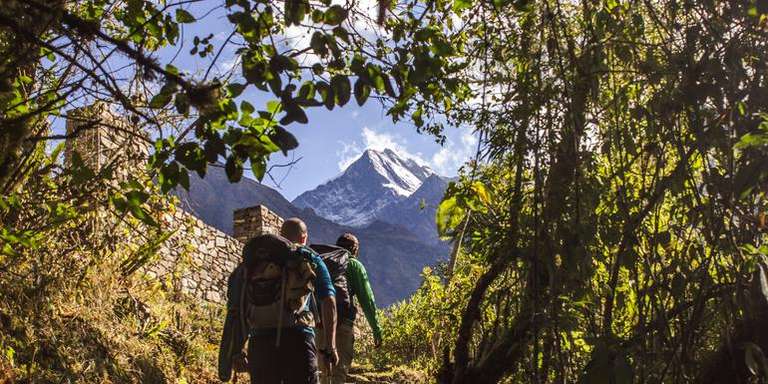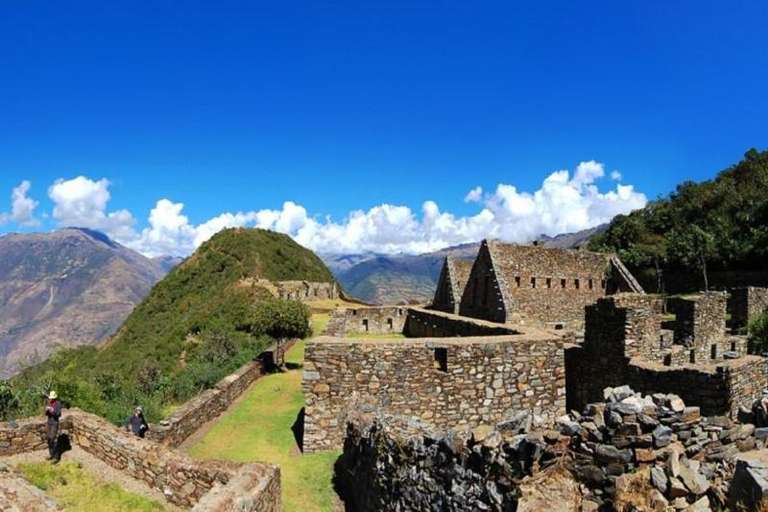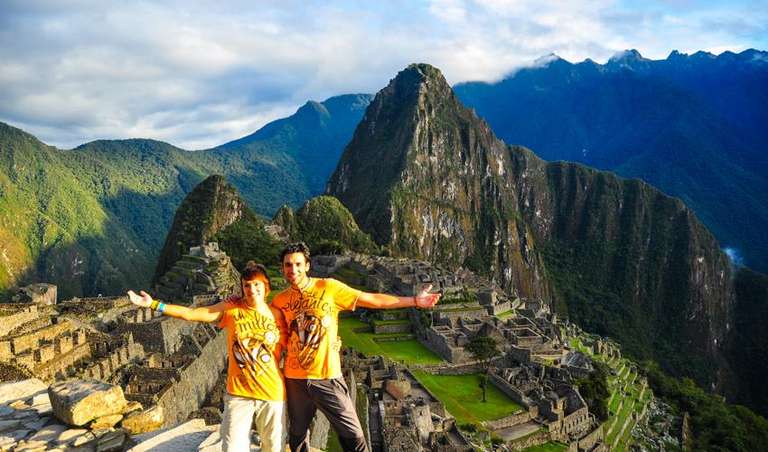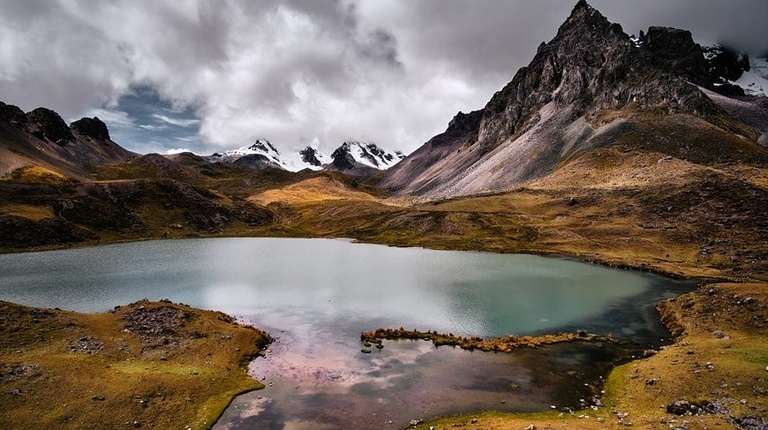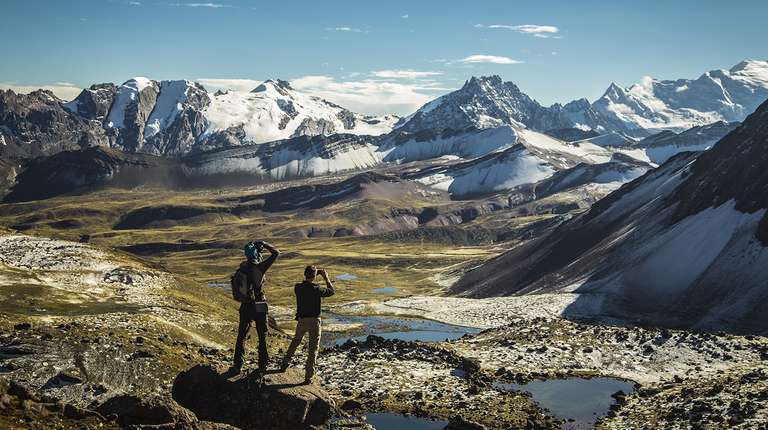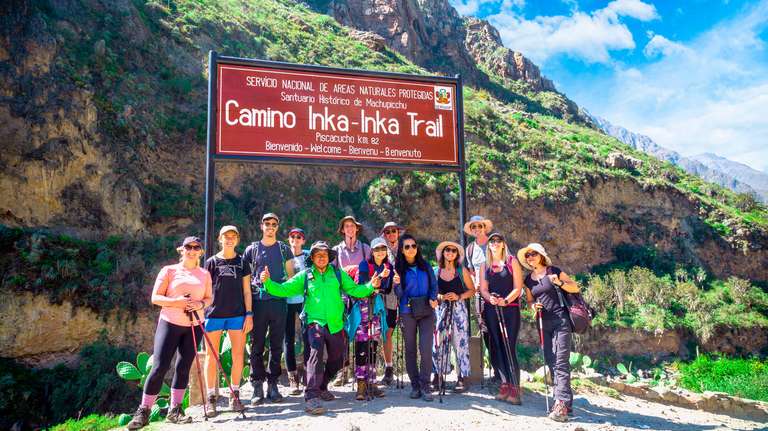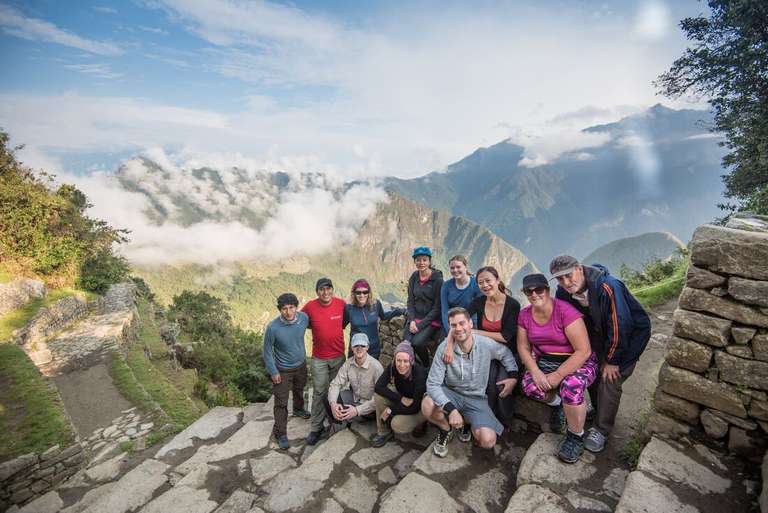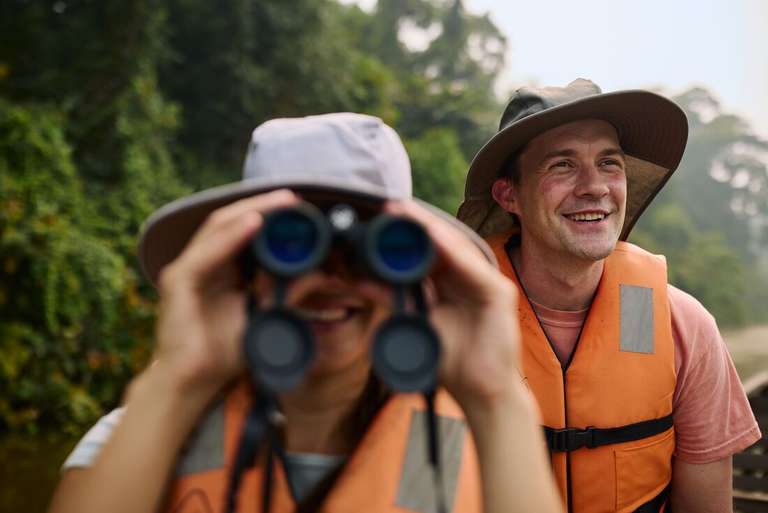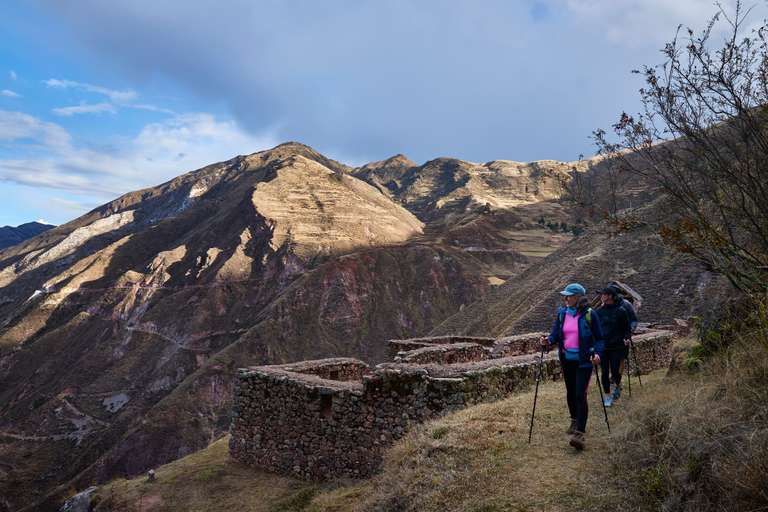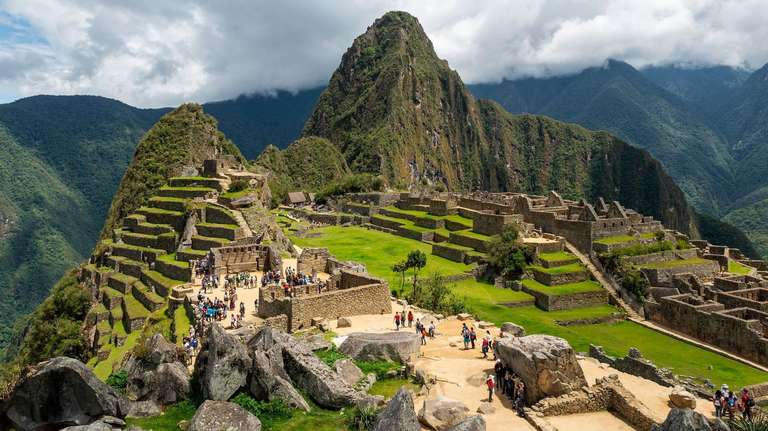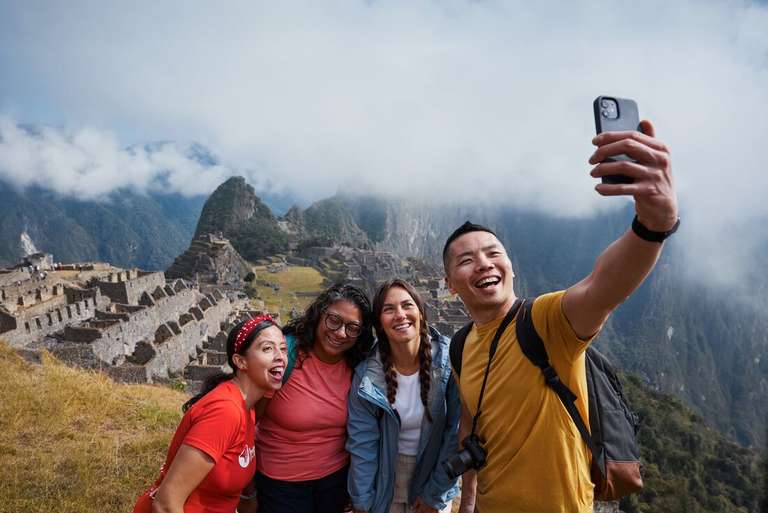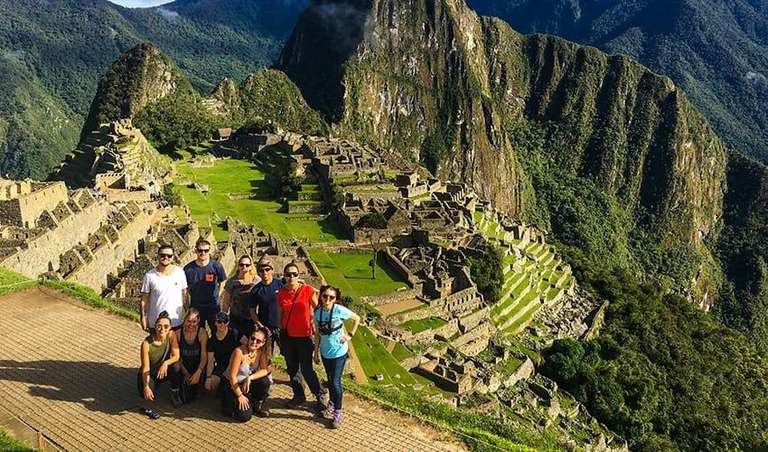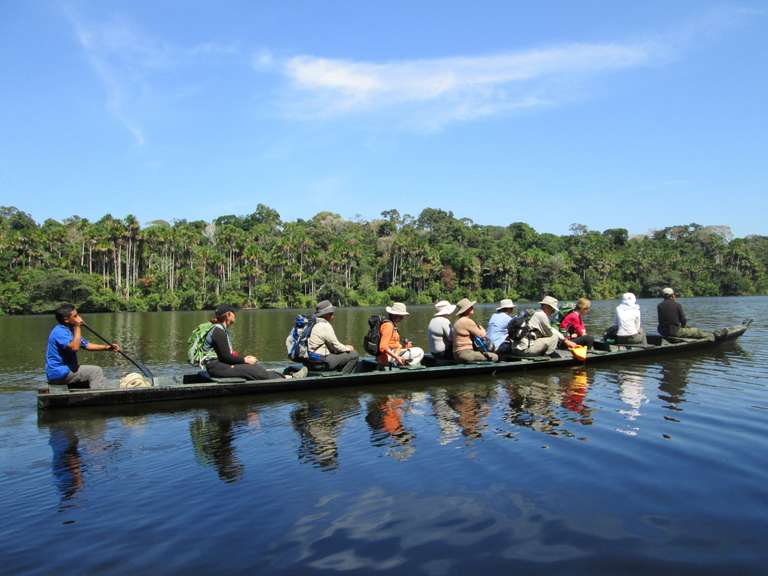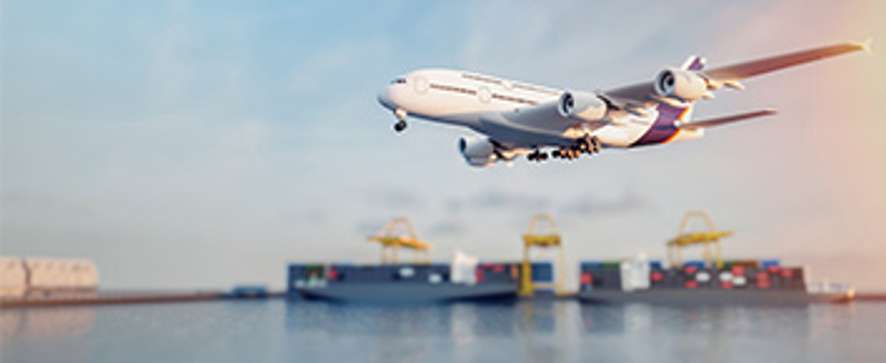12 Best Treks in Peru: The Ultimate Trekking Guide

- Angelo V
- From
- Angelo V
- From
- Zalina A
- From
- Yfat Y
- From
A note on the Inca Trail
The Inca Trail is undeniably the most famous trek in Peru. The classic Peru trek is now walked by so many visitors that the authorities have been forced to restrict access and limit the number of trekkers permitted each day. Places are highly sought after and are booked up months in advance. This why the Inca Trail has not been included in this list.
1. Lares Trek
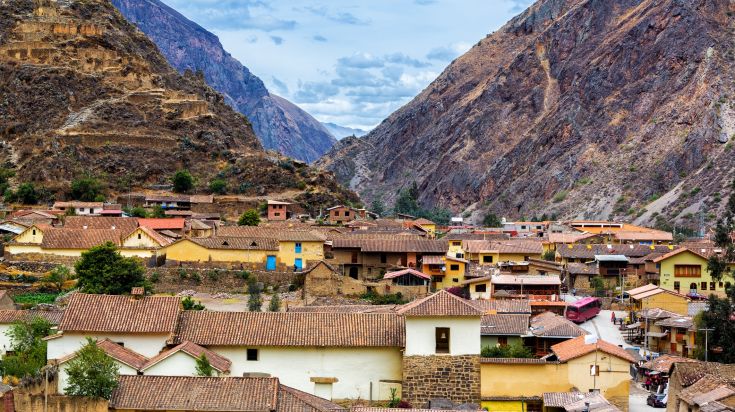
A three-day trek that takes you through the Lares Valley from Ollyantambo. The Lares trek is popular with people who failed to secure a permit for the Inca Trail as a Machu Picchu trek.
Highlights:
- Less tourists means the Lares trek has maintained it’s authenticity.
- Trekkers will spend time in indigenous Quechua settlements.
- Warm up in the hot springs
- Arriving in Machu Picchu
Lowlights:
- Lares reaches a higher altitude than the Machu Picchu trek. Lares is 4,550 m at it’s highest point. Some trekkers may find this very challenging.
- It’s very possible that trekkers will not catch a glimpse of Machu Picchu en route.
| Trek Facts | |
|---|---|
| Trek Difficulty: | Moderate |
| Trek Duration: | 3 days |
| Remoteness: | Remote - it is common to see no or very few people during the trek. |
| Maximum Altitude: | 4,505 m |
| Accommodation type: | Generally camping with facilities or basic hotels. |
| Best Season: | Dry season from May to October |
| Start / End Locations: | Cusco / Aguas Calientes - Cusco |
| Permit required: | None |
| Physical fitness: | Average |
Insider's Tip: For quieter trails and generally nice weather, we recommend undertaking the Lares trek in April or October. Since most of the hike will take place at high altitudes around 4,000 metres, trekkers should train beforehand with exercises like cycling and swimming for better cardiovascular endurance and faster adaptation to the altitude. Don't forget to pack layers for the change in temperatures and a swimming suit so you can relax in the Lares Town hot springs before setting off on your journey. Be sure to rent trekking poles and a sleeping bag in Cuzco before your trek or bring your own. If you want to make a big difference to the locals you meet on the trail, bring small gifts to hand out as you pass through remote Andean communities. — by Clare Frizell from Bamba Experience
2. Salkantay Trek
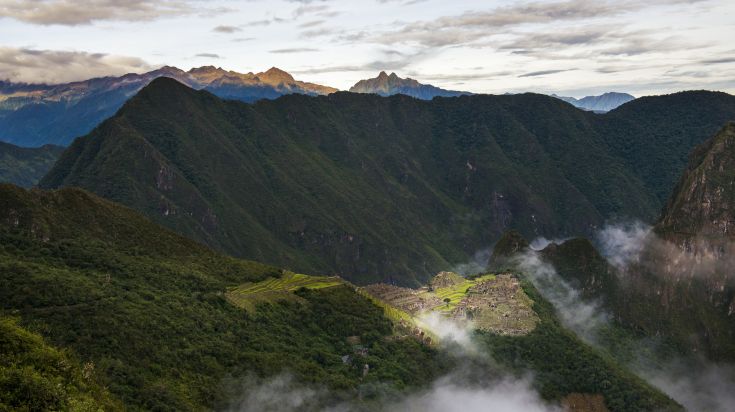
Starting in the Sacred Valley, the Salkantay trek that will take you through the Willkapampa mountain range and to one of the most stunning peaks in the Peruvian Andes. Yes, even better than the Inca Trail as a Machu Picchu trek.
Highlights:
- Catching glimpses of Machu Picchu in the distance
- Hiking over the Salkantay Pass with views of Salkantay and Humantay
- The chance to witness a ceremonial offering to Pachamama, a goddess of the Andes
- Arriving in Machu Picchu
Lowlights:
- While not as busy as the Inca Trail, you will see other trekkers on this trail
- Altitude sickness can be an issue
| Trek Facts | |
|---|---|
| Trek Difficulty: | Moderate - challenging |
| Trek Duration: | 4 or 5 days |
| Remoteness: | Fairly remote with less trekkers than the Inca Trail |
| Maximum Altitude: | 4,600 m at Salkantay Pass, 6,000 m+ at Aguas Calientes |
| Accommodation type: | Camping to first class lodges are available |
| Best Season: | Dry season from April-November. May and October offer best conditions. |
| Start / End Locations: | Cusco - Mollepata / Aguas Clientes - Machu Picchu |
| Permits required: | None |
| Physical fitness: | Average to above average |
Insider's Tip: The Salkantay trek requires good physical condition, so we recommend some training ahead of your departure with exercises like running, cycling and swimming. Bring warm clothing and plenty of layers, as there can be significant climate changes associated with the altitude changes (from 4000 meters to 2000 meters). Due to unfavourable climatic conditions, there are no departures for the trek in January and February. We recommend trekking June-September in the dry season, when days are warmer. Don't forget to rent your trekking poles and sleeping bag once you arrive in Cuzco, or bring your own from home. If you are feeling up for it, don't miss the extra hike to Laguna de Humantay - the views are indescribable! — by Clare Frizell from Bamba Experience


The Santa Cruz trek is considered one of the best treks in the world and is the most famous trekking trail in the Cordillera Blanca region. This trek takes you through beautifully open valleys, jewel coloured lagoons and snowy mountain peaks.
Highlights:
- Rare wildlife including eagles and the Andean Spectacled Bear
- Experiencing daily life in the Andes in the villages around Vaquería
- Experiencing glaciers and cerulean lagoons
Lowlights:
- At such altitude, the cold can be hard to deal with
- Facilities at campsites can be crowded
| Trek Facts | |
|---|---|
| Trek Difficulty: | Moderate |
| Trek Duration: | 3 or 4 days |
| Remoteness: | This is the most popular trek in the Cordillera Blanca, so expect groups. |
| Maximum Altitude: | 4,760 m |
| Accommodation type: | Camping |
| Best Season: | Dry season, generally May-September though shoulder season hikes may be possible |
| Start / End Locations: | Huaraz / Huaraz |
| Permits required: | Yes for Huascarán National Park |
| Physical fitness: | Moderate |

Choquequirao is considered to be one of the last Inca cities standing before succumbing to the Spanish and the majestic nature of this citadel is still apparent. Located in the Cusco region, the Choquequirao trek is very different to the Machu Picchu trek. No transport awaits, just incredible views.
Highlights:
- Experiencing a vast difference in landscapes
- Spotting Choquequirao through thick forest
- Having an incredible Inca site all to yourself
Lowlights:
- Sandflies can be an issue at lower altitudes
- Steep ascents and descents are challenging
- Not much is known of Choquequirao, so curious trekkers may be disappointed with the lack of information
| Trek Facts | |
|---|---|
| Trek Difficulty: | Challenging |
| Trek Duration: | 4 days |
| Remoteness: | Very, hiking provides the only access to Choquequirao |
| Maximum Altitude: | 3,050 m |
| Accommodation type: | Camping |
| Best Season: | Dry season, May-October |
| Start / End Locations: | Cachora which is situated just off the road between Abancay and Cusco |
| Permits required: | None |
| Physical Fitness: | Moderate to high due to steep ascents and descents. Not suitable for first time trekkers. |
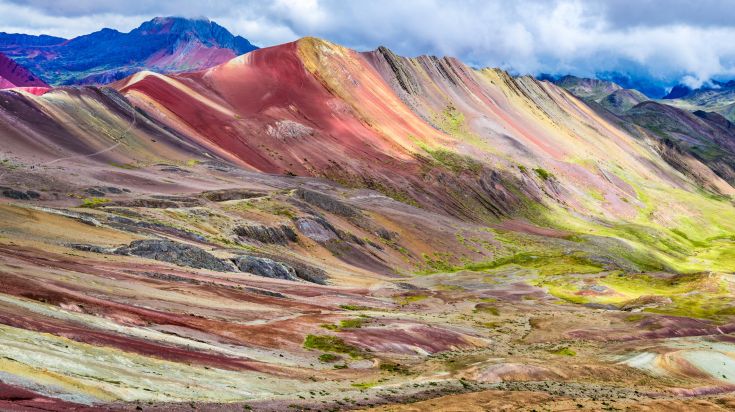
Pilgrimage along this sacred mountain trek, the highest in the region, as the Inca’s once did. The Ausangate trek offers one of the most beautiful sceneries that Peru has to offer – giving you a slice of the Quechua culture.
Highlights:
- Superior lodging
- Immerse yourself in the culture of the Quechua people
- Witness traditional offerings to Ausangate.
- Seeing the Painted Mountain
Lowlights:
- Lots of time will be spent at high altitude, so sickness is common
- Many trekker will tell you that there were simply no low points of this trek!
| Trek Facts | |
|---|---|
| Trek Diffculty: | Moderate-challenging |
| Trek Duration: | 5-7 days |
| Remoteness: | Trekkers are immersed in Quechua culture |
| Maximum Altitude: | 5,150 m |
| Accommodation type: | Lodging in tambos |
| Best Season: | Dry season, May-October |
| Start / End Locations: | Cusco / Cusco |
| Permits required: | None |
| Physical fitness: | High. Not suitable for first time trekkers. |

An extremely remote trek, attempted by few tourists, the Vilcabamba trek is challenging and rewarding in equal measure. Trekkers will pass by rarely seen ruins deep in the jungle as well as being able to explore Vilcabamba, the last refuge of the Incas before their final conquest by the Spanish Inquisitors.
Highlights
- Very remote and not a crowded trail, with plenty of authentic trekking experiences
- Vilcabamba also known as the ‘Lost City of the Incas’, the Incas’ last refuge during the Spanish conquest
- Amazing landscapes with varied terrain including snow-capped mountains and sub-tropical jungle
Lowlights
- Lack of facilities such as toilets
- Trek only possible during the dry season
| Trek Facts | |
|---|---|
| Trek Difficulty: | Difficult |
| Trek Duration: | 4 - 7 days |
| Remoteness: | Extremely remote |
| Maximum Altitude: | 3,900 m |
| Accommodation Type: | Camping. It should be noted, however, that there are no official campsites or toilets on the trail. |
| Best Season: | May - September |
| Start / End locations: | Cusco or Huancalle – Kiteni / Cusco |
| Permits Required: | No permits required |
| Fitness Level Required: | Good |
7. Ancascocha Trek


A remote and adventurous high-altitude trek in Peru, and a good alternative to the Inca Trail, the Ancascocha trek will take you right into the wilderness of Peru. For four days, you will be trekking through stunning mountain scenery before finally being able to visit Machu Picchu on the last day.
Highlights
- Little-known trek with very few tourists
- Off- the-beaten trekking route
- Sublime mountain scenery with high passes and glistening lakes
- Finishes with a visit to Machu Picchu
- Opportunities to interact with the locals
Lowlights
- Requires three days of acclimatisation in Cusco, before starting the trek.
- Cold temperatures at high altitudes
| Facts Heading: | |
|---|---|
| Trek Difficulty: | Difficult. Several passes between 4,600 m and almost 5,000 m. |
| Trek Duration: | 5 days |
| Remoteness: | Very remote |
| Maximum Altitude: | 4,959 m |
| Accommodation Type: | Tents |
| Best Season: | March - November |
| Start / End Locations: | Cusco or Mollepata – Aguas Calientes |
| Permits Required: | No permits required |
| Fitness Level Required: | Good |

A very demanding trek for those who wish to test themselves, this trail leads all the way around the mighty Huayhuash range in an unforgiving, but stunning part of the world. The Huayhuash Circuit trek passes below some of Peru’s most notorious mountains including Siula Grande, the mountain made famous by Joe Simpson’s account of his gruelling ordeal in Touching the Void, as well as Yerupajá, Peru’s second highest peak, which has been successfully summited only a handful of times.
Highlights
- Catch sight of mighty peaks such as Siula Grande and Yerupajá
- Test yourself against an extremely remote terrain
- See remote locations of astounding natural beauty
- Feel the thrill of crossing several passes over 5,000 metres
Lowlights
- Tough trek involving hard ascents and cold temperatures
- Very little tourist infrastructure, but trails are there
| Trek Facts | |
|---|---|
| Trek Difficulty: | Difficult |
| Trek Duration: | 10 – 14 days |
| Remoteness: | Very remote |
| Maximum Altitude: | 5,465 m |
| Accommodation Type: | Tents |
| Best Season: | May - September |
| Start / End Locations: | Huaraz / Cuartelwain – Llámac / Huaraz |
| Permits Required: | No permits required |
| Fitness Level Required: | Excellent |
9. Alpamayo Base Camp trek

If you are not an elite mountaineer, it is impossible to reach the peak of Mt. Alpamayo (5,947 m), but if you are in good physical condition, then you can still easily opt for the Alpamayo Base Camp trek. The Alpamayo mountain is considered to be one of the most beautiful mountains in the world. This trek should only be attempted by trekkers who are very fit and have high stamina. This challenging trekking trail in Cordillera Blanca is also an intriguing alternative to the popular Santa Cruz trek.
Highlights
- Catch sight of Mt. Alpamayo, one of the world’s most beautiful mountains as well as Mt. Huascaran (6,768 m), the highest mountain in Peru
- Chance to trek in a remote, rarely visited part of the Cordillera Blanca
- Far fewer tourists than on the Santa Cruz Trek
Lowlights
- Involves a high level of danger where evacuation might be impossible
- No facilities along the trekking route
| Trek Facts | |
|---|---|
| Trek Difficulty: | Very difficult |
| Trek Duration: | 6-7 days |
| Remoteness: | Very remote |
| Maximum Altitude: | 4,850 m |
| Accommodation Type: | Tents, no official campsites |
| Best Season: | May to September |
| Start / End Locations: | Huaraz / Vasqeria – Hualcayan / Huaraz |
| Permits required: | Yes |
| Fitness Level Required: | Good fitness and high endurance levels required, acclimatisation is essential |

Trekking in the Cotahuasi Canyon is an alternative to the increasingly popular Colca Canyon treks. Taking a three-hour drive from the attractive town of Arequipa, brings trekkers to the Cotahuasi Canyon, an area and gorge where trekkers can expect to find cascading waterfalls, Incan and pre-Incan ruins, hot springs, astounding views and giant condors soaring in the skies above.
Highlights
- Chance to discover a much less known part of the country
- Opportunity to experience traditional way of life
- Many different trekking options to suit all requirements
- Area of great natural beauty
- Sipia waterfalls, having a 150 m drop!
Lowlights
- Some trails difficult to access without a guide
| Trek Facts | |
|---|---|
| Trek Difficulty: | Easy – Moderate. Longer treks can be challenging. |
| Trek Duration: | Customisable. Usually about 4 days but can range from 1 day to 10 days |
| Remoteness: | Remote |
| Maximum Altitude: | 3,000 m+ |
| Accommodation Type: | Tents |
| Best Season: | June - September |
| Start / End Locations: | Arequipa |
| Permits Required: | Not required |
| Fitness Level Required: | Good |
11. Chachapoyas trek
While not as famous as Cusco and Huaraz hikes, this trek comes with plenty of ruins and cloud forest scenery. Encounter rarely visited ruins on your 7- to 10-day journey. These ancient structures receive much less footfall than their counterparts in Cusco. The trek also treats you with a stunning view of the world’s third highest waterfall.
Highlights
- Witness the amazing Catarata de Gocta waterfall, which was discovered in 2006
- Explore 200 ancient structures in Vira Vira
- See Kuelap Ruins, a walled settlement that came to existence in the 5th century
Lowlights
- Lack of enough hiking information and detailed maps
- You might need a guide to complete this trek
| Trek Facts | |
| Trek Difficulty: |
Moderate |
| Trek Duration: | 7 to 10 days |
| Remoteness: | Remote. It is fairly common to encounter only a handful of travelers during this trek. |
| Maximum Elevation: | 3,000 m |
| Accommodation Type: | Mainly camping with some basic lodging |
| Best Season: | Dry season, from May to September |
| Start/End Locations: | Chachapoyas |
| Permits Required: | No |
| Fitness Level Required: | Average to above average |
12. Huaytapallana trek
Stunning views of the gorgeous Huaytapallana Mountain Range follow you throughout the journey during this trek. Experience what it is like to hike along Peru’s shrinking glaciers and around glistening glacial lakes. You will descend into the dense Amazon towards the end of your journey.
Highlights
- Hike through glaciers and along glacial lakes
- Be surrounded by arid but beautiful Andean scenery
- Spend the majority of the trek away from crowds
Lowlights
- High elevation, which means multiple days of acclimatisation
- You will need a guide for this route
| Trek Facts | |
| Trek Difficulty: |
Difficult |
| Trek Duration: | 5 to 6 days |
| Remoteness: | Remote. Only one section is popular with day hikers |
| Maximum Elevation: | 4,800 m |
| Accommodation Type: | Camping |
| Best Season: | Dry season from May to September |
| Start/End Locations: | Huancayo |
| Permits Required: | No |
| Fitness Level Required: | Good |
Safety Considerations
As with all treks anywhere, it’s important to consider safety before embarking on Peru treks. Altitude sickness can have a major effect on short-term well-being. Be sure to acclimatise, especially in elevated places such as Cusco. Take Diamox tablets and drink plenty of water. If travelling during the wet season, be aware of weather issues such as flooding and landslides. Be well prepared for the cold with quality thermals and sleeping bags.
Peru and mountains go hand-in-hand. While hiking the Inca Trail or Machu Picchu trek has gained a reputation for being a bucket-list item, there are many rewarding treks in Peru that offer a more authentic experience, while still experiencing the history of Peru.
Although Peru is now one of the most popular tourist destinations in South America, with a little planning and forethought, Peru offers some of the best treks in the world. Still, some of these treks receive few tourists, making them that more attractive, remote and pristine.
Whether you want to find an original alternative to the Inca Trail or you hope to trek in the Cordillera Blanca without following the masses along the Santa Cruz trail, Peru is very likely to have a hike or trek that will appeal to you. All that is left is for you to choose your next trek or hike in Peru!



